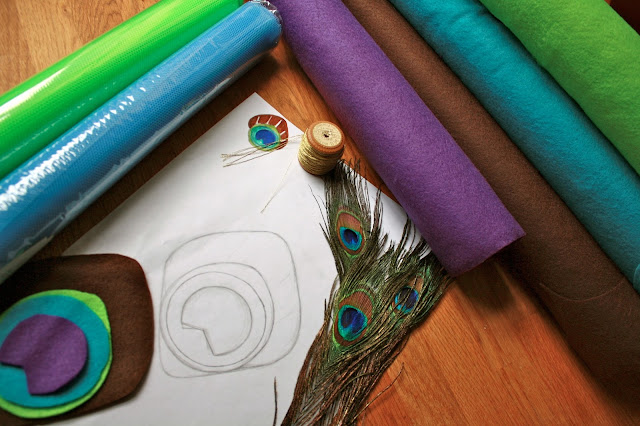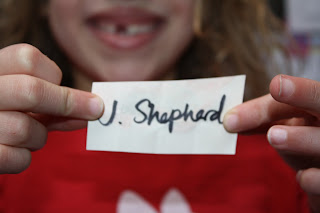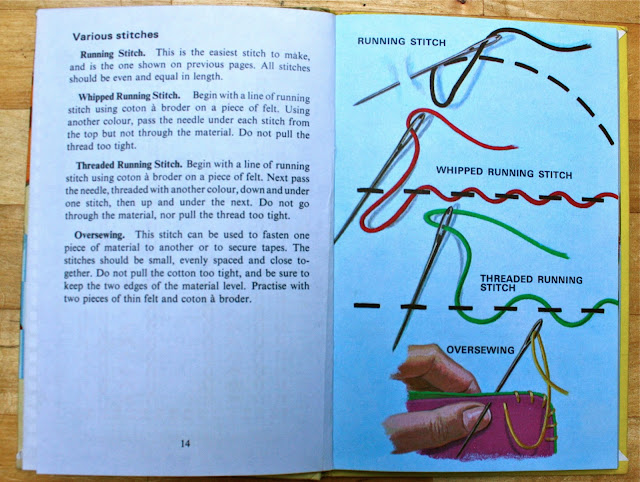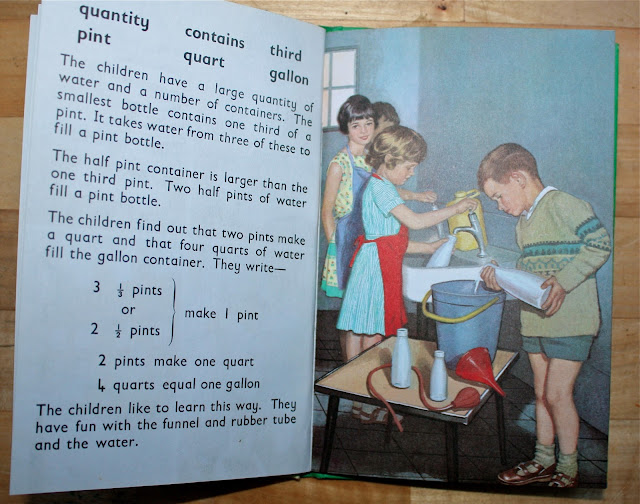Everyday Words For Numbers by J McNally and W Murray with illustrations by Kenneth Inns is part of the Ladybird Words for Number Series, it is book four.
Being Mrs C posted on the third book in this series (which I also have) last week, so I thought I would post on this one.
Are you wondering what the
Ladybird Words for Number Series is?
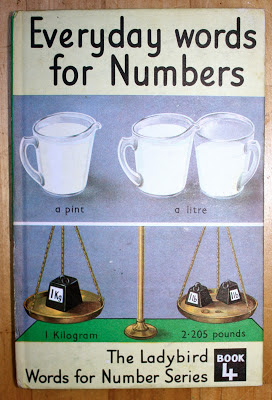 "A vital part of a child's development is concerned with language growth. Language shapes our thoughts and influences our modes of learning. Words and symbols not only represent objects, but events, ideas and concepts... Numbers are not met in isolation from language or experience."
"A vital part of a child's development is concerned with language growth. Language shapes our thoughts and influences our modes of learning. Words and symbols not only represent objects, but events, ideas and concepts... Numbers are not met in isolation from language or experience."
Still none the wiser? Well, it's four books for children that present the words that are most frequently used to describe situations involving numbers; ie weights and measurements, distances, temperature, coins etc. For example: This book originally cost 2'6. The first thing, on the first page, that strikes me is all the old currency and what, to me, seems like the extraordinarily complex coin system. It takes three pages to explain it.
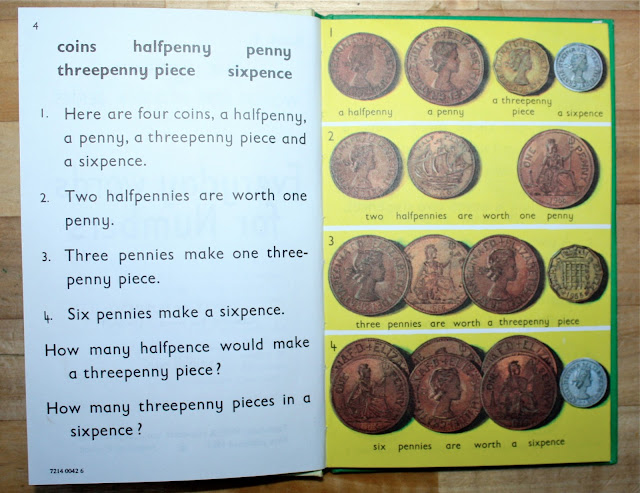
It pains me to cast aspersions on Ladybirds ability to impart knowledge on any subject, but, to be honest, I am still ignorant of any real understanding even after reading this. I was born in 1970 and am too young (just) to remember, 'old money'. But, what I do recall is my mother and grandmother periodically going off into these impenetrable tirades on florins, and half crowns, and shillings, and sixpences. So, I may have just switched off as soon as I saw the word 'threepenny'.
Everyday Words For Numbers was first published in 1967, three years before
Decimal Day. It was on 15th February 1971 that the United Kingdom changed from the centuries old tradition of using 12 pence to the shilling and 20 shillings to the pound to a new decimal system. A year after
Everyday Words For Numbers was first published the government began to issue the new shillings and florins which were 5 and 10 new pence coins. So, with the publication of this book there must have been some knowledge that decimal was coming. Yet they leave the last two pages of this book to discussing decimal in any form and then it is only decimal fractions and the metric system for measurements.
And they don't exactly try to make it look very exciting do they? Whereas using the imperial system to measure volume is a right wheeze...
I love the little boy in the foreground's jumper and his brown
Start Rite shoes, don't you? One of my favourite things about this book is the illustrations. The clothes the children are wearing, the milk bottles, the scales they're using and the scale being used to weigh them; see below. I remember at infant school when we all used to troop down to the school nurses' room to be weighed, measured and checked for nits - Ahh the 70's. Kids today just don't know what they're missing.

One of the things I am really enjoying about our
Ladybird Tuesday posts is that as I read each Ladybird book I notice the tension between the differences that the years have made to this world we live in, and the constants, the things have remained the same. In the illustrations there are those grey institutional interiors, the utilitarian props and the 70's dress sense that I look back on with nostalgia and genuine affection. Then there are the things that never change, that British love of the bargain, sale shopping. There is a whole page on it and one of the most colourful and animated illustrations. And apparently they happen only once a year.
This post is part of Ladybird Tuesday started on the Being Mrs C blog, take a look at her posts here.
And the rest of Mrs Fox's Ladybird Tuesday posts are here and if you have a collection of Ladybird books, please do feel free to join in.


